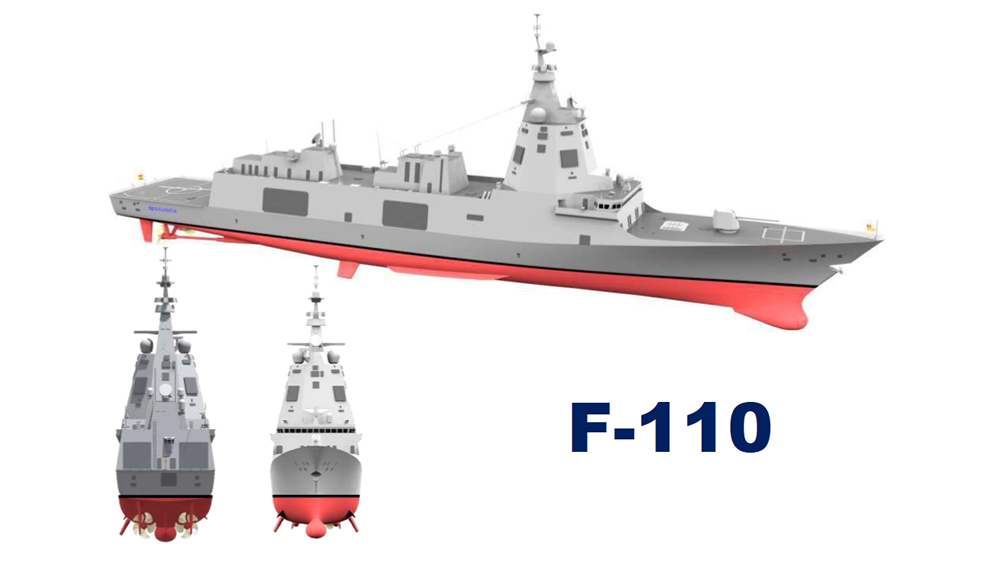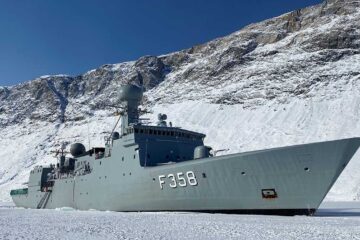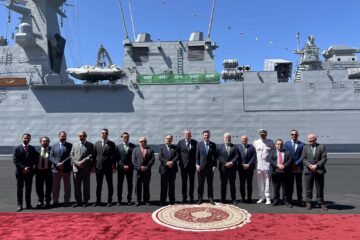The future F-110 frigates, which will replace the current Santa María class frigates as from 2026, represent a technological leap forward in platform systems and their combat system, incorporating Industry 4.0 technologies into their design to improve lifecycle-long system management. The SENDA navigation system, for its part, is GMVs’ advanced naval navigation and timing solution. It provides positioning, speed, attitude and timing data in various formats, offering an all-in timing and navigation system.
The various F-110 systems call for a continuous, precise and trustworthy positioning, speed and attitude source. With this purpose in mind, SENDA incorporates multi-constellation (GPS, Galileo) satellite navigation technology compatible with both civil and military signals, plus DGNSS corrections. SENDA also hybrids own satellite navigation data (GNSS) with data received from external sensors, such as inertial navigation systems (INS), pitometer logs, etc., and includes state-of-the-art algorithms to provide robust navigation in contested GNSS scenarios.
SENDA also includes a timing server that generates highly precise and stable timing signals, allowing the ship’s systems to synchronize with GPS time. SENDA guarantees timing reference stability and negligible drift, even during prolonged periods of GPS downtime.
SENDA is a totally redundant system with two complete functional subsystems working in active-active configuration, together with redundant GNSS signal distribution. Both systems, monitored in real time, exchange information to provide the overall system with the best possible solution.
The complete SENDA system, taken together with GMV’s range of defense products, makes GMV a national navigation-system benchmark, with tried and tested experience in the aeronautics, land and naval sectors in platforms like the unmanned aircraft ATLANTE, the 8×8 Dragon vehicle and now the F-110 frigates.
About F-110 Bonifaz-class Frigates of the Spanish Navy

Navantia and the Spanish Ministry of Defense have signed the contract for the construction of five F-110 frigates for the Spanish Navy in April 2019.
F-110 frigates are set to replace the Spanish Navy’s Santa Maria-class frigates which have been in service for over 30 years. F-110 frigates will be fitted with the Aegis combat system integrating a new solid-state S-band radar by Indra. Lockheed Martin and Indra have been collaborating since 2009 to develop a state-of-the-art S-band solid state radar for Spain’s F-110 Frigate Program.
The first ship of the new class is expected to be delivered in 2025 and the final one in 2030.
Known as the Bonifaz-class, these frigates will feature:
- A sonar suite by Thales (BlueMaster UMS 4110 and CAPTAS 4 Compact sonars, the TUUM-6 underwater communication system, and the BlueScan digital acoustic system)
- The SCOMBA combat system by Navantia
- The S-band variant of Lockheed Martin’s SPY-7 radar
- Leonardo 127mm 127/64 LW main gun
- Raytheon’s Evolved SeaSparrow Missile (ESSM) Block 2 missile
F-110 Specifications
Displacement: 6100 tons
Length: 145 m
Width: 18 m
Draft: 5 m
Speed: 35 knots
Crew: 150 sailors
Aviation facilities: Hangar + helideck for 2 NH-90 NFH/TTH or 2 SH-60 or UAV






